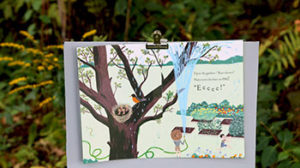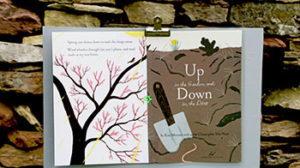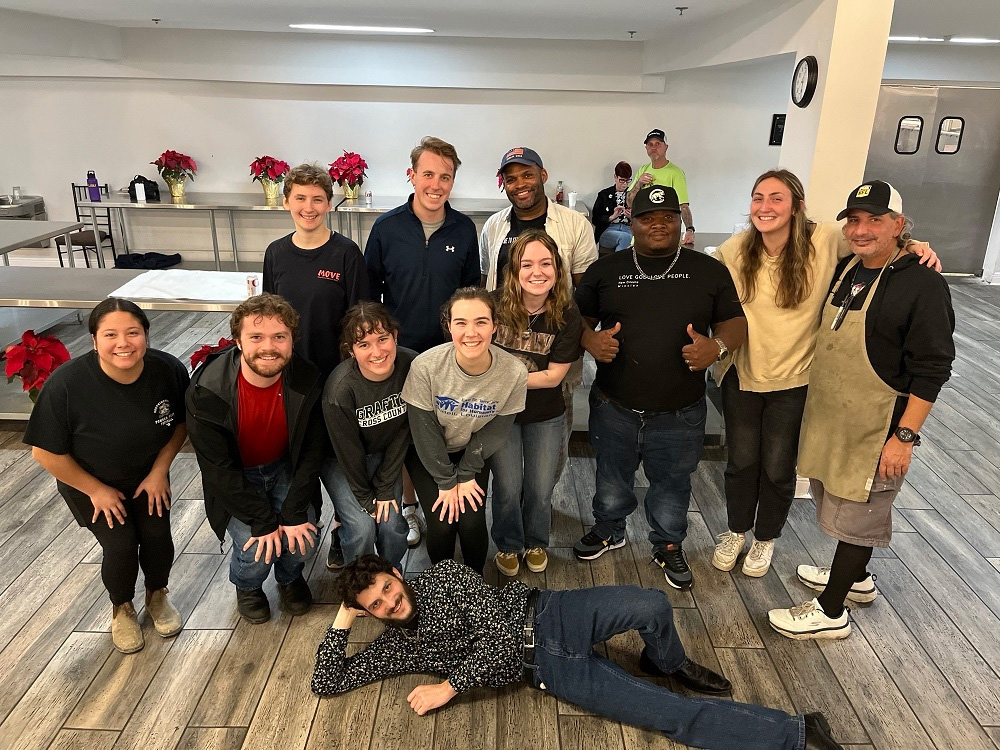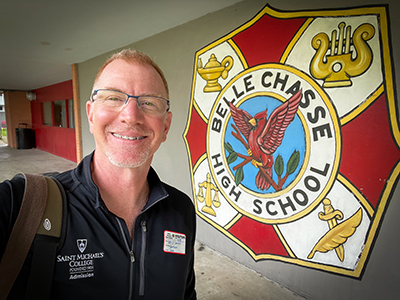Biology through storytelling
Project teaches biology through Garden storytelling

The images show different perspectives on colorful, fun and educational posters along the story walk in the Teaching Gardens. (photos by Ashley DeLeon ’23)
In the Saint Michael’s College Teaching Gardens, a beautiful array of children’s stories can be found near the greenery. However, for many students, the “StoryWalk®” holds a significance beyond the beautiful depictions on each sign.
The leading professor of this project, Valerie Bang-Jensen of the education faculty, began the Story Walk several years ago as a way of bringing children’s stories to life. The students involved in this project from her classes represent a vast array of majors ranging from biology to education, adding to the uniqueness of the garden as a whole. Bang-Jensen said each story was carefully picked by a student and chosen based on its closeness to some unique aspect of the garden. The trademarked StoryWalk ® idea originated with Anne Ferguson of the Kellogg-Hubbard Library in Montpelier, she said.
The team of Bang-Jensen, her students, and their “MakerSpace” collaborators who helped with fabricating posts for the signs on the story walk (as the class generically spells what they are doing), chose stories about seeds and pollination to provide information to visitors and enrich their learning. However, bringing stories to life is only one dimension of the project, since Bang-Jensen also perceives and cultivates a crossover between biology and storytelling.
Bang-Jensen explained how in 2006, the College granted a beautiful plot of land, currently known as the Teaching Gardens between St. Edmund’s Hall and McCarthy Arts Center, to her and biology Professor Mark Lubkowitz; they collaborated to make use of the space in a manner that would engage scientists and storytellers alike.
The collaboration between biology and storytelling not only serves as a learning enrichment opportunity for students, but also provides an alternate perspective on viewing nature in the world around, she said.
Ryan Agnew ’20, a student in Bang-Jensen’s Literature for Children and Adolescents class that has been adding to the story walk this fall semester 2019, said, “As far as the biological aspects of a garden being presented to young visitors of the story walk goes, I feel that the story walk is a great way to introduce basic biological concepts to younger visitors. The book itself presents information about the garden and the organisms living within it in a very straightforward and easy to understand manner.”
He and his professor believe that creating the bridge between storytelling and biology opens a new frame of mind for young learners as they become newly aware of the world around them. Agnew said he also feels that the use of a children’s book to teach younger visitors about biological concepts is very effective, as most of the younger visitors should already be familiar with many of the characteristics of storytelling, which may make understanding the ideas found in the book easier. “Additionally, having the story walk set in the Teaching Gardens may present an opportunity for the story walk visitors to observe some of the organisms and biological concepts first-hand. I can’t think of a better way to get young students excited about reading and biology,” he said.
"...I can’t think of a better way to get young students excited about reading and biology."
Collaboration continues to serve as a large part of the story walk success as all of the students and faculty involved contributed their individual talents to the project. Some students painted, laminated, and worked with the individual placement of each story throughout the garden. The class team also expanded outside of its network and worked with the MakerSpace in Dion Family Student Center to create sign posts to be placed around the garden. Students and their professors spent many working towards the finished product, and Bang-Jensen said students contributed their own time after class and outside of their school routine to finish the Story Walk.
 Bang-Jensen sees an overriding theme in the story walk: That everything in life is connected. Courtney Desmarais ‘20 from the fall semester class group said, “What you don’t see when you look at the story is the enjoyment of putting it together and figuring out how all the pieces fit together. A story walk is powerful because it engages people of all ages. It allows people to get outside and have fun with reading.”
Bang-Jensen sees an overriding theme in the story walk: That everything in life is connected. Courtney Desmarais ‘20 from the fall semester class group said, “What you don’t see when you look at the story is the enjoyment of putting it together and figuring out how all the pieces fit together. A story walk is powerful because it engages people of all ages. It allows people to get outside and have fun with reading.”
The story walk has unlimited chapters left to be written, said the professor and students, as it continues to serve as a bridge connecting storytelling and biology as well as a way of bringing the community together, one story at a time.





